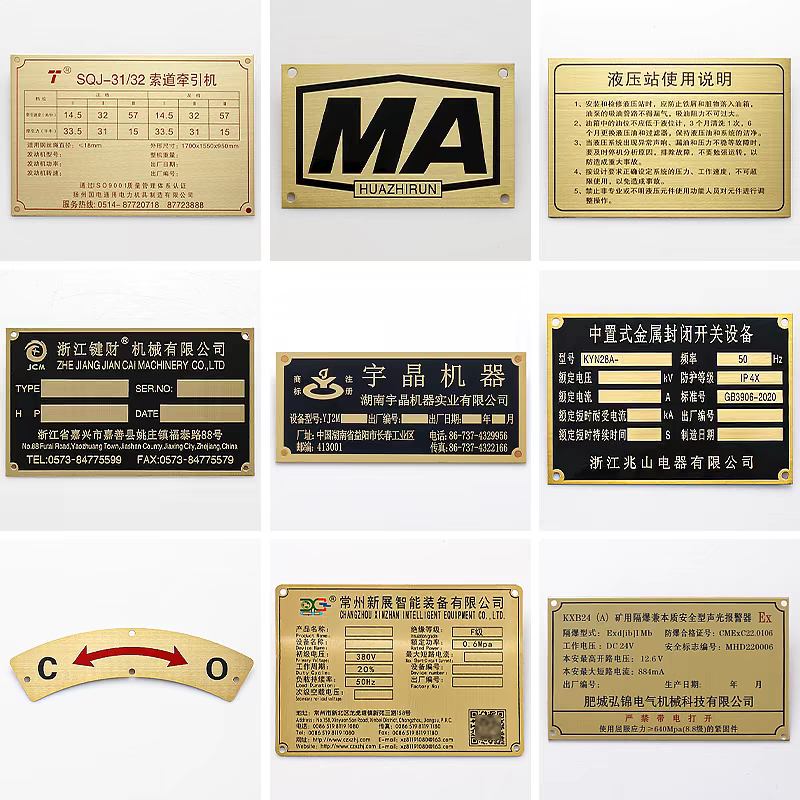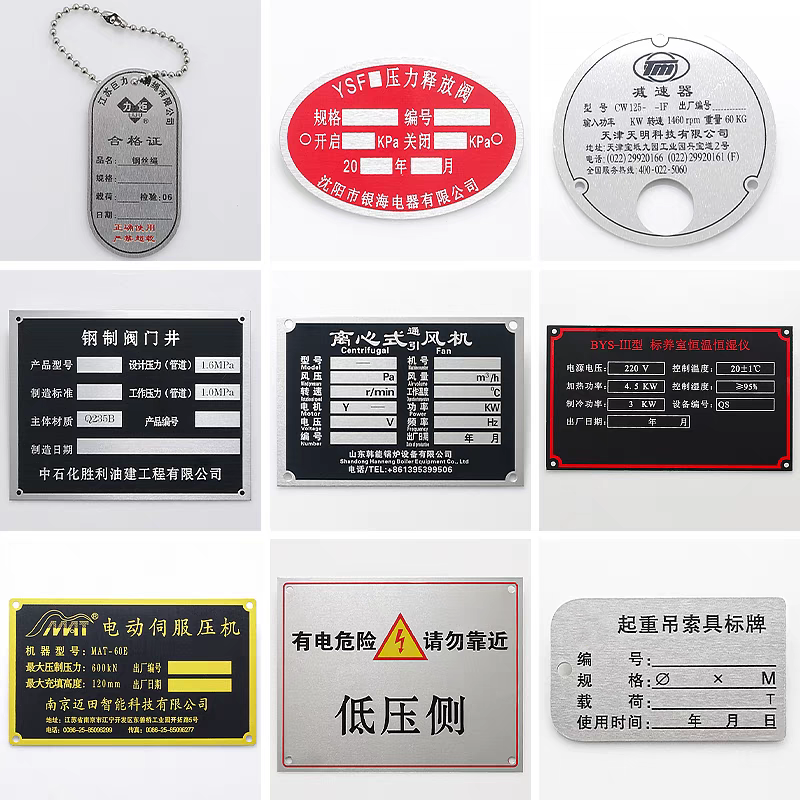Fire extinguishers are critical first lines of defense against small fires. However, their effectiveness hinges entirely on their being operational and ready for use at a moment's notice. This readiness isn't assumed; it's verified and documented through a rigorous schedule of inspections, maintenance, and testing. Central to this documentation process is the fire extinguisher inspection record tag. This small, often durable card or label attached directly to the extinguisher serves as its official "passport," providing a concise, accessible history of its care and compliance. Understanding what these tags are, why they matter, and how to manage them is fundamental for any business owner, facility manager, or safety officer. This article delves deep into the world of fire extinguisher inspection record tags, exploring their purpose, legal basis, content, management, and the critical role they play in overall fire safety.

What Exactly is a Fire Extinguisher Inspection Record Tag?
A fire extinguisher inspection record tag is a physical document, typically made of durable, weather-resistant material like plastic or coated cardstock, securely attached to the fire extinguisher itself, usually via a wire or plastic hanger looped around the neck or handle. Its primary function is to provide an immediate, at-a-glance record of the extinguisher's inspection and maintenance history. Think of it as the extinguisher's permanent logbook, always traveling with the unit.
Unlike internal maintenance records kept in an office, the tag is accessible directly at the extinguisher's location. This allows firefighters, safety inspectors, facility personnel, or even insurance auditors to quickly verify the extinguisher's status without needing to consult separate files. Each time a qualified technician performs any service – a monthly visual check, an annual maintenance inspection, a hydrostatic test, or recharge – they record essential details directly onto this fire extinguisher inspection record tag. Its constant presence ensures accountability and traceability for the life of the extinguisher.
The Legal and Regulatory Imperative Behind Inspection Tags
The requirement for documented inspections and, consequently, fire extinguisher inspection record tags, is not merely a suggestion; it's mandated by law and enforceable codes in most jurisdictions. The primary standards governing fire extinguisher maintenance in the United States are established by the National Fire Protection Association (NFPA), specifically NFPA 10: Standard for Portable Fire Extinguishers.
NFPA 10 Compliance: NFPA 10 explicitly requires regular inspections (monthly visual checks by facility personnel) and more thorough maintenance (typically annually by certified technicians). Crucially, Section 7.3.1.1 of NFPA 10 (2022 Edition) states: "A permanent record shall be maintained of the hydrostatic retest... and shall be kept until the retest is repeated or until the extinguisher is hydrostatically retested again or taken out of service." While this specifically calls out hydrotest records, the standard also mandates records for maintenance (Section 8.4.1) and inspections (implicitly through the requirement to correct deficiencies found during monthly checks, Section 6.2.1.1). The fire extinguisher inspection record tag is the universally accepted method to fulfill this "permanent record" requirement that travels with the extinguisher.
OSHA Enforcement: The Occupational Safety and Health Administration (OSHA) adopts NFPA standards by reference in regulations like 29 CFR 1910.157, which governs portable fire extinguishers in the workplace. OSHA inspectors routinely check for the presence and completeness of fire extinguisher inspection record tags during site visits. Missing or incomplete tags are a common citation item.
Insurance Requirements: Insurance companies often mandate compliance with NFPA standards as a condition of coverage. Properly maintained fire extinguisher inspection record tags demonstrate due diligence in fire safety, potentially influencing insurance premiums and validating claims in the event of a fire.
Local Fire Codes: Many state and local fire marshals have codes that directly incorporate or exceed NFPA 10 requirements, making the tag a local legal necessity.
Failure to maintain proper fire extinguisher inspection record tags can result in significant fines, citations, increased insurance scrutiny, and, most importantly, potential liability if an unserviced or non-functional extinguisher fails during a fire emergency.

Deciphering the Information on an Inspection Record Tag
A properly filled-out fire extinguisher inspection record tag provides a wealth of information at a glance. Key fields typically include:
Extinguisher Identification: Manufacturer, model, serial number, and type (e.g., ABC Dry Chemical, CO2, Water). This links the tag definitively to a specific unit.
Service Dates: Clearly marked sections or lines for recording the date of the last:
Monthly Inspection: Usually initialed or signed by the facility personnel performing the quick visual check.
Annual Maintenance: Conducted by a certified technician. This is a thorough examination, internal inspection (every 6 or 12 years depending on type), and any necessary servicing.
Hydrostatic Test: The date of the last pressure vessel test (required every 5, 12, or more years depending on the extinguisher type).
Recharge: If the extinguisher was discharged or partially used, or as part of the 6-year maintenance for some types.
Service Type: Checkboxes or descriptions indicating what specific service was performed (e.g., "Annual Maintenance," "6-Yr Internal Exam," "Hydrotest," "Recharge").
Service Provider Information: The name, signature, and often the license/certification number of the qualified technician or company performing the service (especially for maintenance, hydrotesting, and recharging).
Next Service Due Date: A critical field indicating the month and year the next required service (annual maintenance or hydrotest) is due. This is essential for scheduling.
Weight/Charge Verification: Notation of the current weight (for cartridge-operated or CO2) or pressure gauge reading (within the green zone) confirming the extinguisher is fully charged.
Comments/Deficiencies: Space to note any issues found (e.g., "gauge slightly low, recharged," "hose slightly cracked, replaced," "pin seal missing"). This documents corrective actions taken.
The clarity and completeness of this information on the fire extinguisher inspection record tag are paramount for verifying compliance and operational readiness.
Types of Inspections and Maintenance Documented on Tags
Fire extinguisher inspection record tags capture different levels of service, each with its own purpose and frequency:
Monthly Visual Inspections (Performed by Facility Personnel):
Purpose: Quick check for obvious signs of damage, obstruction, or depletion. Ensure accessibility and visibility.
Tag Documentation: Usually involves the inspector initialing and dating a specific section or line for that month on the tag. They verify the gauge is in the green, the pin/seal is intact, there's no physical damage, the nozzle is clear, and the extinguisher is in its designated place. No tools are required beyond checking the physical condition and pressure gauge.
Annual Maintenance (Performed by Certified Technician):
Purpose: Thorough external and internal examination (as per the schedule - typically every 1, 6, or 12 years depending on extinguisher type and component). Technician verifies all mechanical parts, extinguishing agent, and expellant gas. Necessary maintenance is performed.
Tag Documentation: The technician signs and dates the annual maintenance section, often specifying the type of maintenance performed (e.g., "Annual External," "6-Yr Internal"). They update the "Next Service Due" date. This is the most common professional service documented on the tag.
Hydrostatic Testing (Performed by Certified Test Lab):
Purpose: To verify the integrity of the extinguisher's pressure vessel. The cylinder is filled with water, pressurized to a specific level, and examined for leaks, expansion, or rupture. Required every 5, 12, or more years based on extinguisher type and material.
Tag Documentation: The test date and facility performing the test are recorded. A separate test collar is often placed around the neck of the extinguisher, but the date and result (pass/fail) are also prominently marked on the fire extinguisher inspection record tag itself. The "Next Hydrotest Due" date is updated.
Recharging (Performed by Certified Technician):
Purpose: Replacing the extinguishing agent and expellant gas after any use, or as part of periodic maintenance (like the 6-year requirement for stored pressure dry chemical extinguishers).
Tag Documentation: The recharge date and technician's information are recorded on the tag, often linked to an annual maintenance entry if done concurrently.
The fire extinguisher inspection record tag provides a chronological log of all these critical interventions.
Best Practices for Managing and Maintaining Inspection Tags
Proper management of fire extinguisher inspection record tags is essential for their effectiveness:
Durability: Use tags specifically designed for the environment. Plastic or laminated tags are essential for extinguishers located outdoors, in damp areas, kitchens, or garages where paper tags would quickly deteriorate.
Secure Attachment: Ensure the tag is securely fastened using the provided metal or plastic wire/hanger. It must not easily fall off or become detached. Tags should hang freely and be readily visible.
Legibility and Permanence: All entries on the tag must be made with permanent, waterproof ink (indelible marker). Faded pencil or water-soluble ink marks are unacceptable and can lead to citations. Writing must be clear and legible.
Completeness: Every required field must be filled out accurately at the time of service. Missing dates, signatures, or service type indications invalidate the record. Ensure comments clearly explain any deficiencies found and corrected.
Timeliness: Services must be performed on schedule, and the tag updated immediately afterward. Outdated tags are a red flag for inspectors.
Replacement: When a tag becomes full, damaged, illegible, or outdated (e.g., a new hydrotest cycle begins), it must be replaced. The new tag should ideally include the extinguisher's service history from the old tag or clearly indicate the history is maintained in a separate, permanent log (though the tag itself remains the primary on-unit record for the current service cycle). Never remove an old tag without ensuring the history is preserved or transferred.
Electronic Tags (Emerging Trend): Some providers now offer QR code or barcode tags. Scanning the code links to a digital service record. While convenient, ensure these systems meet NFPA requirements for a "permanent record" associated with the unit and that the physical tag still displays essential information (last service date, next due date, service provider) in case the digital system is inaccessible. The core function of the physical fire extinguisher inspection record tag remains vital.
Consequences of Poor or Missing Inspection Record Tags
Neglecting fire extinguisher inspection record tags carries significant risks:
Regulatory Citations and Fines: OSHA and fire marshal inspections will almost certainly result in citations and potentially hefty fines if tags are missing, incomplete, illegible, or outdated. This is one of the most common fire code violations.
Failed Safety Audits: Corporate safety audits or client-mandated site audits will flag missing or improper tags as non-compliance, potentially impacting contracts or business reputation.
Increased Liability: In the event of a fire where an extinguisher fails, the absence of documented maintenance via the tag can be used as evidence of negligence. It becomes extremely difficult to prove the extinguisher was properly maintained, exposing the business or property owner to significant legal liability.
Voided Warranties: Manufacturer warranties often require proof of proper maintenance according to NFPA 10. Missing tags can void these warranties.
Operational Uncertainty: Without a clear tag, facility personnel cannot easily verify if an extinguisher is serviceable. They may waste time during an emergency trying to check an unmarked extinguisher or, worse, attempt to use a faulty unit.
Insurance Complications: Insurance companies may deny or reduce claims if inadequate fire safety maintenance, evidenced by poor fire extinguisher inspection record tags, is deemed a contributing factor to fire loss. Premiums could also increase.
Compromised Safety: Ultimately, the biggest risk is human life and property. An extinguisher that hasn't been properly inspected and maintained may not function when needed most. The tag is the primary visual assurance that the device is ready.
The humble fire extinguisher inspection record tag is far more than just a piece of paper or plastic attached to a red cylinder. It is a vital legal document, a compliance indicator, a maintenance log, and a critical component of an overall fire safety program. It provides immediate, on-the-spot verification that a life-saving device has been properly cared for and is ready to perform. Understanding its purpose, the information it must contain, the regulations it satisfies, and the best practices for its management is non-negotiable for anyone responsible for fire safety in a building or workplace. Investing time and resources in ensuring fire extinguisher inspection record tags are always present, accurate, durable, legible, and up-to-date is an investment in compliance, liability protection, and, most importantly, the safety of occupants. Never underestimate the importance of this small but essential element of fire protection. Regular audits of your extinguishers should always include a thorough review of their accompanying tags.






